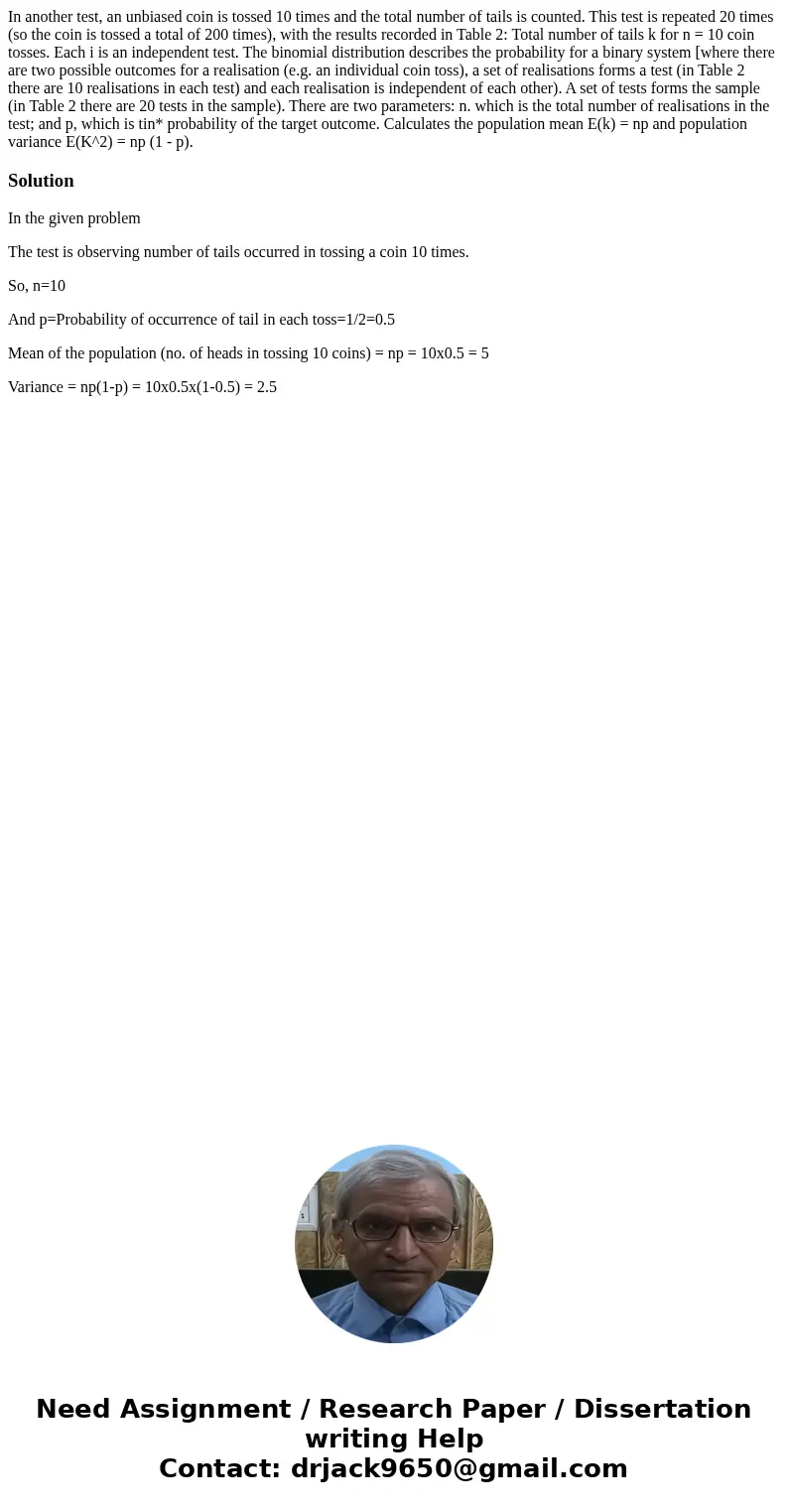In another test an unbiased coin is tossed 10 times and the
In another test, an unbiased coin is tossed 10 times and the total number of tails is counted. This test is repeated 20 times (so the coin is tossed a total of 200 times), with the results recorded in Table 2: Total number of tails k for n = 10 coin tosses. Each i is an independent test. The binomial distribution describes the probability for a binary system [where there are two possible outcomes for a realisation (e.g. an individual coin toss), a set of realisations forms a test (in Table 2 there are 10 realisations in each test) and each realisation is independent of each other). A set of tests forms the sample (in Table 2 there are 20 tests in the sample). There are two parameters: n. which is the total number of realisations in the test; and p, which is tin* probability of the target outcome. Calculates the population mean E(k) = np and population variance E(K^2) = np (1 - p).
Solution
In the given problem
The test is observing number of tails occurred in tossing a coin 10 times.
So, n=10
And p=Probability of occurrence of tail in each toss=1/2=0.5
Mean of the population (no. of heads in tossing 10 coins) = np = 10x0.5 = 5
Variance = np(1-p) = 10x0.5x(1-0.5) = 2.5

 Homework Sourse
Homework Sourse